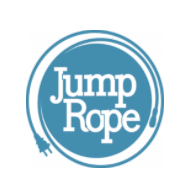Mastery Based Learning
An Overview of Mastery-Based Learning
The Young Women’s Leadership School, Astoria

“For the first time in my whole educational career, I knew what the teachers were giving me a grade for and what I needed to improve on.”
Alumni Student
What is Mastery-Based Learning?
Mastery-based learning is a teaching, learning and assessment philosophy and practice that focuses on a student’s real skill progression throughout the year. Teachers plan and assess in a way that gives students multiple and varied opportunities to practice and demonstrate growth and mastery of key skills and content-knowledge. At TYWLS of Astoria, these skills fall under our ten shared outcomes: Argue, Be Precise, Collaborate, Communicate, Conclude, Create, Discern, Innovate, Investigate and Plan! We believe mastery of these outcomes encompass the knowledge, skills and dispositions needed for a purposeful, meaningful, and productive life in the world beyond school. Our shared outcomes endure across units, content and grade levels so students can see their progress over time. Grades are mere snapshots of where students are in their journey to mastery of these skills.
Mastery-based teaching and learning is a more equitable approach because..
- it focuses transparently on skills and not on behavior
- is more flexible and gives everyone a fair chance at being successful, in that it allows students to move on when they’re ready—or revisit something when they need support
- allows for instruction to be varied based on a student’s unique needs
- allows educators to create unique, personalized learning experiences that move away from solely Eurocentric perspectives and provide opportunities that are balanced and diverse
- prevents biases of educators and the institution from interfering with the true picture of how a student is doing academically (i.e. citizenship, participation and homework grades)
Why do we use Mastery-Based Learning at TYWLS of Astoria?
Link to a video about what it means to us:
- Having the same “outcomes” and shared outcomes across multiple assignments, over time, allows for revisiting. This is, at least, closer to real learning. You sometimes need more time, or another opportunity before you “get it”.
- Students and parents can see exactly what it is they need to work on.
- Grades are no longer a mystery. We no longer have to ask ourselves "why is it an 'A?' What “kind” of an ‘A’ is she? (Is it because she is good at crafting an argument and supporting it? Because she turns her work in on time? Because she is precise with her grammar?)
What does Mastery-Based Learning look like at TYWLS of Astoria?
Every teacher, in every subject, uses Shared Outcomes that integrate “21st-century skills” needed to be successful in college, career, and beyond. (Argue, Be Precise, Collaborate, Communicate, Conclude, Create, Discern, Innovate, Investigate and Plan)

Each shared outcome can be broken down into sub-skills or what we call “outcome targets.” These outcome targets are connected to the state standards for each course. For example,
- Shared Outcome: Argue
ELA Outcome Target: Formulates and defends an argument using a variety of evidence
from multiple sources - Shared Outcome: Create
Science Outcome Target: Create a model that represents a scientific concept
Within an outcome target, students either Meet Standards (MS), Exceed Standards (ES) or “Not Yet” (NS).
- MS means a student is performing this skill at grade level.
- ES means this student’s work is consistently above and beyond what is required.
- NY means students haven’t shown they can perform this task consistently, YET. They will have opportunities to work on these skills in the future.
Where do we track our Mastery and Grades?
 Jumpro.pe is the online grade book teachers use to take attendance and rate (grade) student evidence. This platform is mastery only, so they only work with schools just like TYWLS.
Jumpro.pe is the online grade book teachers use to take attendance and rate (grade) student evidence. This platform is mastery only, so they only work with schools just like TYWLS.
In JumpRope, students will see the list of classes they are enrolled in and can click each class to see the list of Shared Outcomes. When they click on the Shared Outcome, it will lead them to the Outcome Targets. When they click the outcome target, they will see a list of the evidence they have submitted that was used to determine the grade they earned (NY, MS or ES) for each outcome target.
- Colored bars are visual representations of the rating for a piece of evidence or outcome target.
-
- GREEN: This means a student has an Exceeding Standards in an outcome target.
- YELLOW: This means a student has a Meeting Standards in an outcome target.
- RED: This means a student has “Not Yet” demonstrated meeting or exceeding standards in an outcome target or is missing evidence (in this case an A instead of a NY will appear next to the bar)
- A = Absent. This means that either the student was absent for the evidence or they have not yet submitted the assignment.
- U = Unrated. This happens when the outcome is new and the teacher has not provided the student with enough evidence to assess the student or has not yet updated JumpRope with the students’ grades.